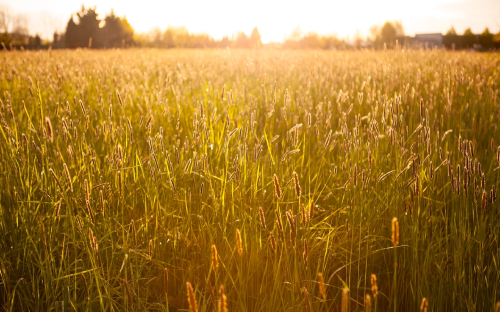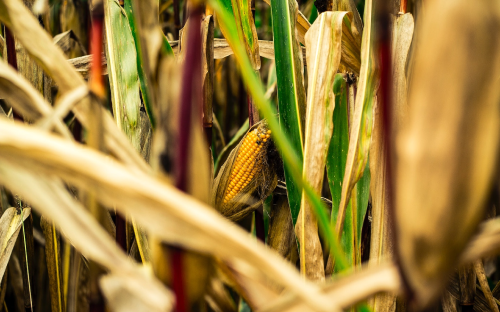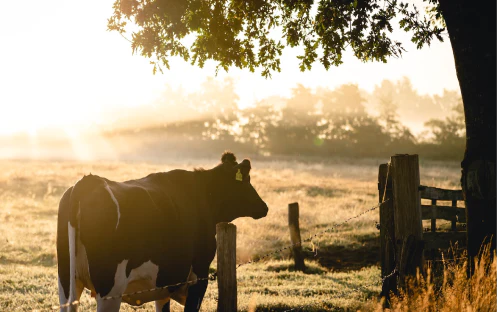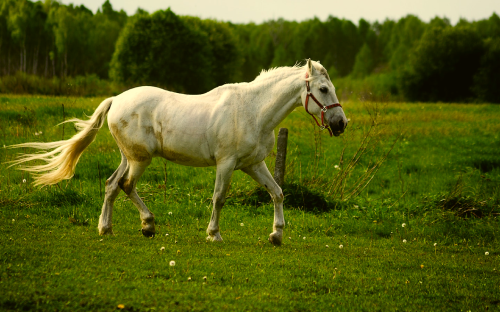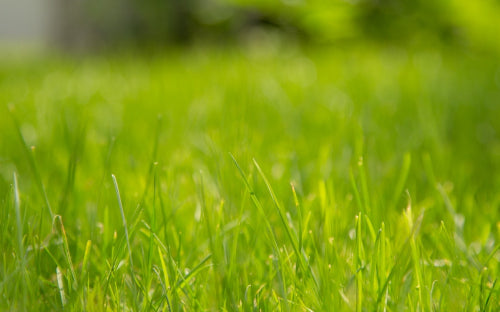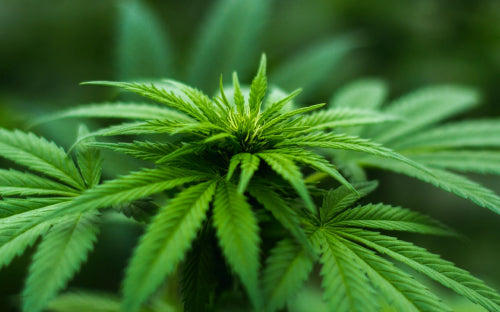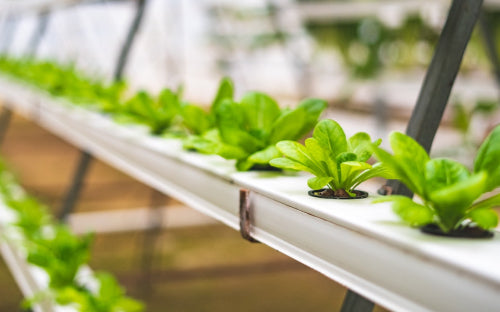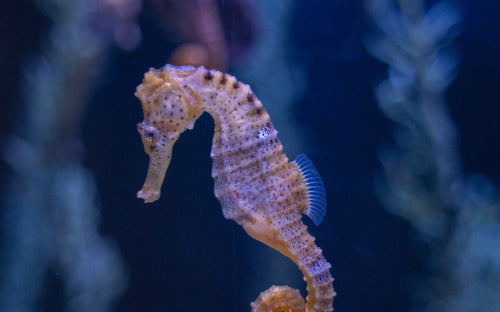Will Winter: How and Why We Need to Give Salt to All Livestock

Salt of the Earth -- How and Why We Need to Give Salt to All Livestock
By: Will Winter, DVM
Salt has changed the living population of planet earth more than just about any other precious substance. Life itself is impossible without salt. The Latin word “salary” comes from the era when salt, very rare at the time, was a powerful barter material utilized in trade for slaves and goods. Even the word “salad” was derived from the fact that Roman soldiers used to salt their lettuce and greens before eating. In Matthew 5:13, Jesus told followers that they were so valuable to him that they were “the salt of the earth”. Salt has enabled civilization itself to arise, and the mining, shipping and control of salt has created and destroyed many empires. Wars were won or lost based upon access to salt (preservation and transportation of food).
What we call SALT is basically an ionic compound of Sodium and Chloride and we need both of these ions. They help create healthy soil (Sodium is a vital part of the cation exchange capacity), healthy plants and for our livestock. Salt preserves our food as well. Most commercially-available salt also contains varying degrees of trace minerals as well. Salt alkalizes our bodies to the desirable state, whereas being acidic typically brings disease and degeneration. Babies with adequate salt intake have higher I.Q.s. Studies show more Type 2 diabetes, stroke, high blood pressure and cardiac problems when there is a low salt intake. We digest food via hydrochloric acid which is made from the chloride ion. Uh, yeah, the need for plenty of good salt is kind of the opposite of what your doctor has been telling you, right? Just be sure to use good, natural sea salt, not the commercial white stuff. Use the Morton’s to de-ice the sidewalk.
All the water on this planet, which incidentally covers about 71% of the entire surface, was once salt-free, fresh water. Today, only 3.5% of all the earth’s water is fresh (not salty) and about 69% of that is locked up as ice (this is rapidly changing by the way). The oceans, 96% of all water, have been enriched over the millennia and made salty and mineral-rich via the topsoil that washes into the ocean. That is where our vital soil minerals went! At this time, and in particular, thanks to irresponsible, idiotic and unsustainable farming practices, over 200 million tons of topsoil continue to be lost to the oceans every year! It is said that the equivalent of a 120 acre farm floats down the Mississippi River every 24 hours! Alas, it’s not called the “Big Muddy” for nothing.
THERE CAN BE NO LIFE WITHOUT SALT
Livestock that are deprived or deficient in salt become deranged, weak and will die. Bison and other large herbivores migrated thousands of miles, orientating their epic journeys based both on better grazing, but equally important, the location of exposed salt and mineral licks. These licks then became prime hunting grounds enabling nomadic and indigenous peoples to thrive and establish villages around them. When European immigrants came to this continent it was easy to remove the people and take over the wildlife harvest at the salt licks, and eventually towns and cities sprung up around the licks. Likewise, extremely huge underground deposits of salt have been discovered. Entire industries, even cities, evolved to mine, purify and ship salt. Salzburg, Austria literally translates into “the city of salt” which came from nearby mines. The port of Liverpool grew from a backwater nothing to one of the largest ports in the world based on the proximity to the salt mines in nearby Cheshire. In fact, any British city or town who’s name ends in ”-wich”, like Sandwich, or Norwich means it was originally founded as a salt mine village.
Salt today is either sourced from evaporation of sea water or via mining the underground, crystallized mineral known as rock salt (or halite). Underground deposits can be a thousand or more feet thick and can be found in the US and Canada under the Appalachian basin from New York to Ontario, and under much of the Michigan basin. There are also large deposits under Kansas, Utah, Texas, New Mexico, Ohio and Nova Scotia.
WHERE LIVESTOCK SALT COMES FROM
Most livestock salt is derived from the underground mines, primarily under Utah and Kansas. These ancient sea beds were evaporated as the continents rose and the most common ones are estimated to be around 240 million years old. At one time here, where I am sitting in Kansas, was covered by an ocean a mile deep. As it dried and crystallized, the surrounding geology determined the relative composition of the various trace minerals. Pink salts have a tiny bit more iron in them leading to the rusty color whereas the grey salts have less. We recommend that people eat sea salt rather than refined white salt, as the commercial white salts have been “purified”, that is, mineral-stripped, then adulterated with additives to prevent clumping.
EVAPORATED SEA SALT
Recently, I have been intrigued by the robust claims of the product Sea-90 Ocean Minerals which has been touted for just about every agricultural use. This is a modern evaporated salt which is dried and harvested very scientifically in the Sea of Cortez, just off of the Baja Peninsula of Mexico. This salt was developed primarily by the late Dr. Maynard Murray, who’s scientific research was carried on by Robert Cain. Whereas seawater is 3.5% solids and the ratios are identical to those needed to match the blood of living beings. When it is dried, the minerals are much more prevalent than ancient salt, ranging up to 28% non- sodium chloride. There is more to this story, including the many ways this type of true mineral salt can be a be applied to pastures to improve quality and quantity of forages.
TOP TEN GUIDELINES
- All livestock need to have a good source of daily sea salt. For the most part, give it free-choice, whereas pigs, dairy animals and poultry can have sea salt mixed directly into the ration. Animals know better than scientists exactly how much salt they need.
- Avoid the use formed blocks of salt. Grazers don’t have time to lick the block, plus the limited-access can prevent some animals from getting enough.
- I know this comes as a shock, but…in almost every circumstance, never mix salt with the vitamin/mineral mix. The ratios animals need will vary from day to day, season to season, condition to condition. Pregnant or lactating animals may need extra minerals but the salt would inhibit consumption. On hot, windy or dry days, they may need more salt but not necessarily more minerals.
- Avoid vitamin-mineral mixes with a high content of salt. Anything over about 5-8% is too much. Sadly, salt is used both as a cheap filler, as well as a flavor stimulant. Look for mineral products that have a good amount of kelp instead.
- Seek out the best sea salt you can find. Sea-90 tops them all for added mineral bonus. Always avoid purified (mineral-stripped) white salts.
- Use a portable mineral wagon or covered hopper for providing free-choice salt. Keep it dry and away from other products. Salt will corrode metal hoppers quickly.
- Use the location of the portable salt/mineral hoppers or wagon to control grazing and traffic patterns. Make it fairly convenient but aim for weed patches or neglected areas.
- If your forages or water are known to be high in iron, make sure to stick with gray sea salts.
- If there are periods of heavy fly or parasite pressure, add a product like Sister of Salt to the regular salt. An 11# bag will doctor 100# of salt. It is 80% sulfur (repellent to flies and biting insects), and over 9000 ppm of good iodine. This is a band-aid compared to such issues as rotation, manure management, dung beetles, or fly traps, but it will definitely work.
- Buy your family some of the best sea salt you can find and don’t be afraid to enjoy it as much as you want! We recommend Baja Gold Sea Salt, from the makers of Sea-90 Ocean Minerals.
IN SUMMARY
The best sea salts in the world will only cost you a penny or two a day per head, maybe even less, so don’t be stingy. As with vitamin-mineral mixes, this is a product in which it doesn’t cost any more to fly First Class! Why settle for less?
___________________________________________________
WILL WINTER is a retired veterinarian, a holistic herd health consultant and livestock nutritionist who hangs his hat in Minnesota. He is also a traveling lecturer and teacher focusing on sustainable livestock production and traditional nutrition. He provides consultations, workshops, lectures and access to natural livestock supplies to farmers and ranchers.
612-756-1232 willwinter.com willwinterdvm@gmail.com

